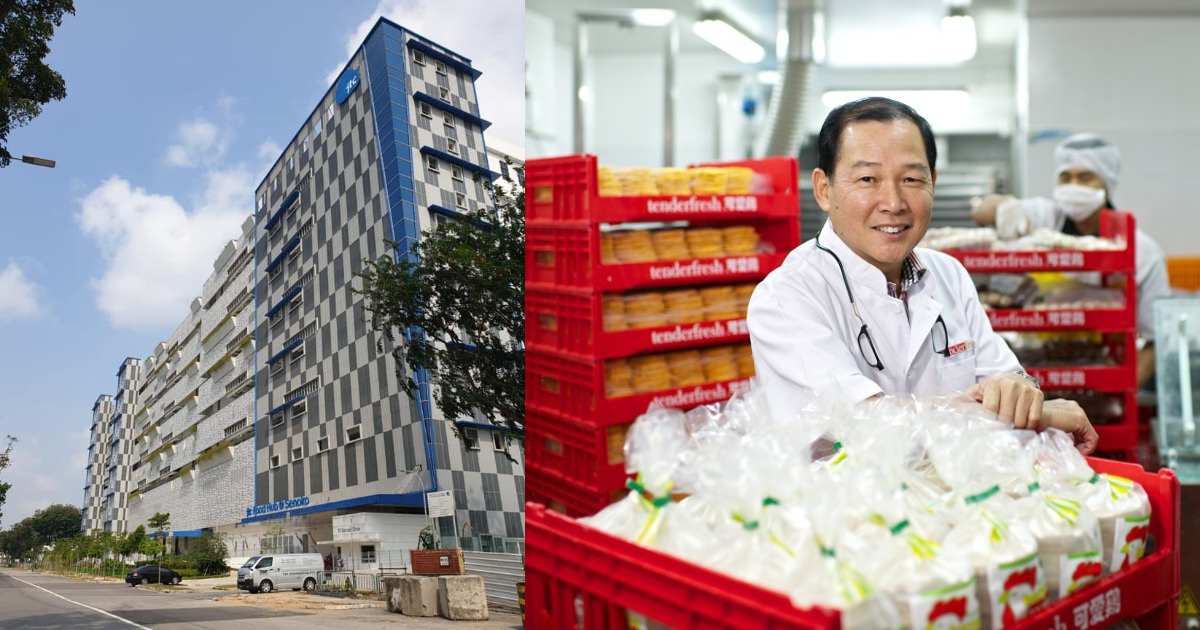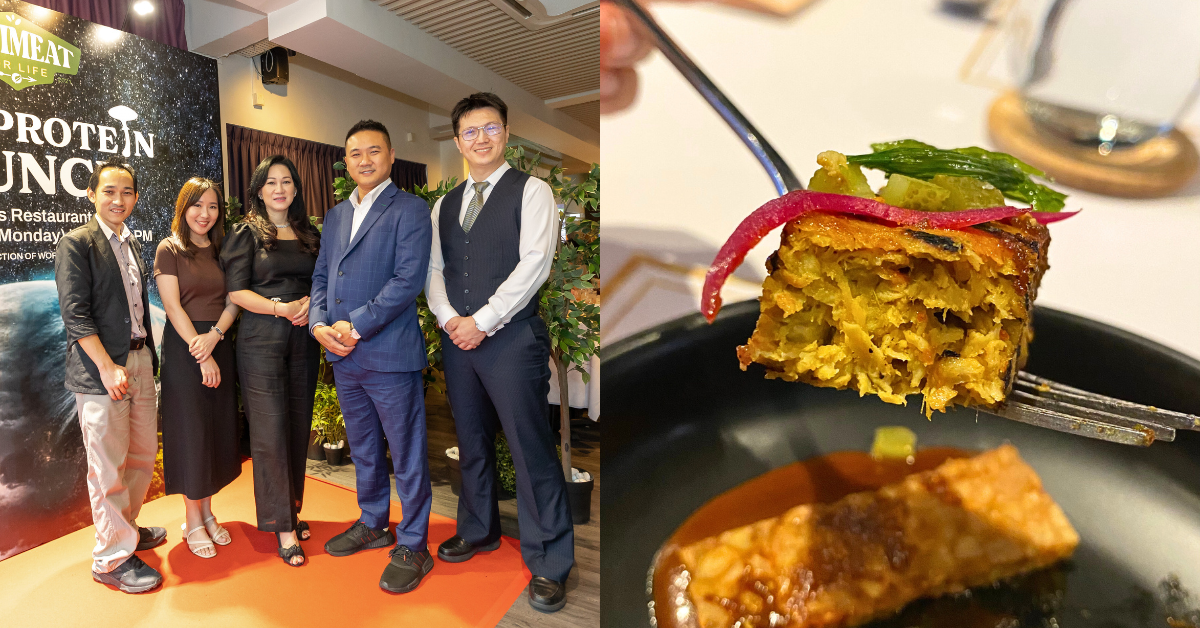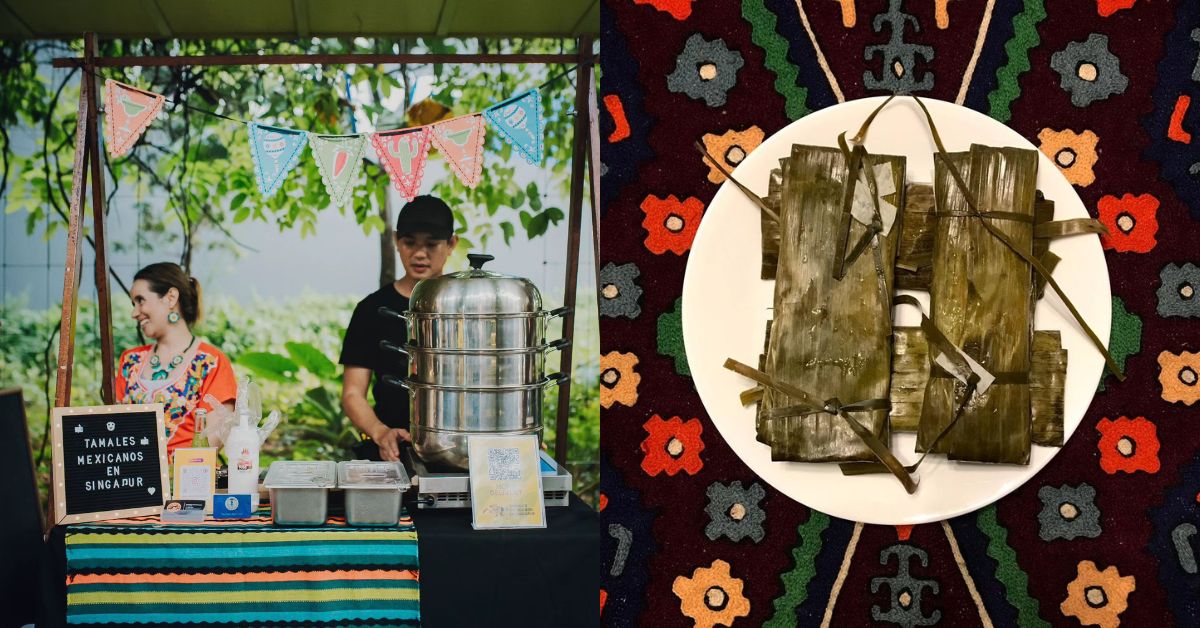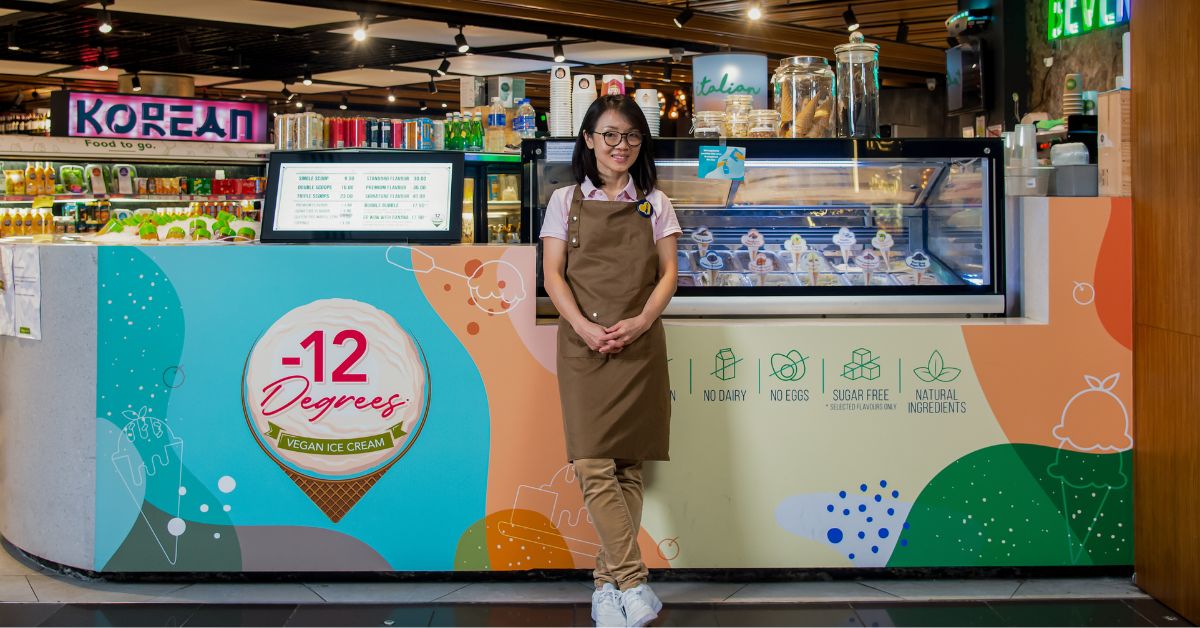I have never been inside a central kitchen and it is definitely not a place that is accessible to the public. I do have a keen interest in food, but not so much on the process of making it.
Therefore, I decided to challenge myself and find out how an F&B brand manufactures their products from scratch, as well as maintain quality and consistency in their food, especially when they supply to so many brands.
Homegrown chicken chain Tenderfresh prides itself on its 25,000 sq ft central kitchen at JTC Food Hub on Senoko Drive.
Grown from a single well-loved local food concept specialising in spring chickens and chicken wings, the Tenderfresh Group now manages a number of concepts ranging from western fares and traditional local cuisines to food kiosks.
The central kitchen supplies to Tenderfresh’s 24 brands and 73 outlets around Singapore, as well as other F&B brands. In total, they cater to about 140 brands and outlets.
With that, I went on a tour of Tenderfresh’s central kitchen to find out how it manages to produce 300 tonnes of chickens in a month.
The Beating Heart Of An F&B Empire
Tenderfresh previously operated from seven units across multiple floors at Woodlands Loop before moving to JTC Food Hub in 2019.
The space combines two factory units, giving way to a larger factory floor.
The JTC Food Hub @ Senoko is home to an ecosystem of players in the food industry.
Furthermore, the CWF (cold room and warehouse facility) feature at JTC Food Hub supports Tenderfresh’s bulk storage needs and offers them much convenience as it’s located directly below the factory units at the Hub.
As a result, they are able to maximise productivity and efficiency with their current space.
Before we began on the tour, we had to don hairnets and personal protection equipment, as well as wash and disinfect our hands.
Tenderfresh’s Chief Operating Officer (COO) Kelvin Chua informed me that the tour will be in a loop — you enter from one end and exit from the other end.
He explained that this is in compliance with the ISO 22000:2005 standard to ensure quality and safety of products, one of the accreditations they have attained.
He added that their machines start rolling at five in the morning every day. Some days, the trucks would be ready to deliver supplies to their outlets and clients by 6am.
About 80 workers work in this 25,000 sq ft facility, which manufactures over 400 items or stock-keeping units (SKUs).
Despite not being the largest central kitchen in Singapore, the fact that they are able to produce such a significant number of products is indeed impressive.
The Hot Kitchen
The first stop of the tour was the Hot Kitchen, where the cooked food is prepared.
Meat is minced to make meatballs, pasta is cooked in boiling water, and soup bubbles away in two gigantic soup makers.
After the food is cooked, it is transferred from the Hot Kitchen into the Packing Room where they are weighed and packed individually before the Tenderfresh label is plastered on each pack.
The sauces used for their food items such as chicken chop and pasta are also prepared in the same central kitchen.
According to Kelvin, practically everything on a Tenderfresh menu is manufactured in this central kitchen.
The Cold Kitchen
We then proceeded to the Cold Kitchen, where the cold items are prepared.
Tenderfresh is known for their fried and BBQ chicken, but their chicken dishes also come with sides such as coleslaw and potato salad.
Kelvin shared with me that the central kitchen produces 2,000kg of coleslaw a day in the cold kitchen.
Half of them are used in outlets under the Tenderfresh umbrella, while the other half are supplied to other restaurants.
The raw vegetables used to make salads are stored in a chiller room before they are washed, peeled, chopped and shredded next door.
After the vegetables have been chopped up, the mixer will mix everything together (including the dressing), and the end result is ready-to-eat coleslaw or potato salad.
Kelvin asserts that not all 400 items are produced in a day. There is a schedule for each item and only 20 to 30 items are produced daily.
For example, while carrots may be processed today, tomorrow’s schedule could be cabbage or turnips.
After the end product has been individually packed in 2kg bags, they will be placed in the chillers, waiting to be delivered.
The Star Item On Their Menu: Chicken
The third stop is the Chicken Processing Room. The preparation of chicken is the highlight as it is a not-to-be-missed item across all of their menus.
While all its brands (be it Tenderbest, Hawkerman or Amigo’s) differ in terms of looks and offerings, Tenderfresh’s core chicken menu is featured in each and every one of their brands, with a focus on great taste at great value.
At the central kitchen, chicken parts are sorted based on their sizes (small or big) in the Cold Kitchen before marination is done.

They use fresh chicken for their menus, which are marinated 24 hours at the central kitchen before they are delivered to the outlets.
Subsequently, the marinated chicken is packed into individual bags on the flow pack machine.
The packs are then transferred to the freezer rooms, before they are delivered across Singapore. The cooking of the chickens only takes place at the outlets.
Keeping Supplies Fresh From Factory To Destination
The last stop of the tour is the holding area, where the supplies are transferred from the chillers or freezers into the hands of the logistics personnel.
The temperature is controlled all the way from the chiller to the holding area to the truck to keep the supplies fresh. These measures are all in compliance to the HACCP certification to ensure food safety.
A total of 15 air-conditioned trucks deliver the supplies to every corner of the island.
Each truck goes to a few locations so they have to ensure that the trucks are running at optimum temperature to keep the supplies fresh.
By now, it’s clear that Tenderfresh has adopted very systematic and efficient processes, leaving little room for error. Here’s a quick overview of the flow in Tenderfresh’s central kitchen:
Upholding Strict Standards

Walking through the different parts of the facility, I noticed how spick and span everything is. The workers also operate in an orderly and efficient fashion, which is a clear result of the rigorous standards that the company upholds.
Kelvin himself spoke proudly about the central kitchen’s cleanliness as they clean it twice a day. He added that the processes of a central kitchen must be very precise.
It is like a laboratory. The weight of the ingredients has to be exact or else the taste may not be the same anymore.
If the wrong temperature is set or some setting is wrong, the whole batch of food could be spoilt and has to be thrown away.
– Kelvin Chua, Chief Operating Officer of Tenderfresh
He added that the reason why many clients approach them is because their central kitchen is known for its high standards and it’s also halal-certified.
Moreover, there is also little to no possibility of a Tenderfresh outlet running out of chicken.
“We do not allow “sell-outs” at the outlets because we have a central kitchen to replenish the supplies,” assured Kelvin.
If there are not enough supplies, the central kitchen continues working. On average, 20 to 25 tonnes of food is produced in a day.
By 3pm or 4pm, all the supplies would have been delivered to the outlets and clients and they will then get ready for next day’s production.
The production manager will liaise with the logistics manager on the quantity of raw ingredients to order for next day’s production, as well as coordinate with the manufacturing team on how much supplies to produce each day.
This ensures that they have sufficient ingredients to produce the amount they need each day.
Top Chicken Supplier In S’pore
While they may not be the largest central kitchen in Singapore, they are easily the top supplier of chicken here.
Their supplies are sent to all brands and outlets under their umbrella such as Tenderfresh restaurants and kiosks, Tenderfresh Classic, Tenderbest Makcik Tuckshop, Hawkerman, Tenderbest and Amigo’s.
While the processes of a central kitchen are not rocket science, there are huge pressures and challenges that come from ensuring that production runs smoothly.
If there is any bottleneck or hiccup, it will affect supply and the outlets. Clients would face a shortage and this would negatively impact their business.
This tour has definitely led me to appreciate the hard work that goes into producing safe and delicious food for us.
Featured Image Credit: JTC / Tenderfresh








